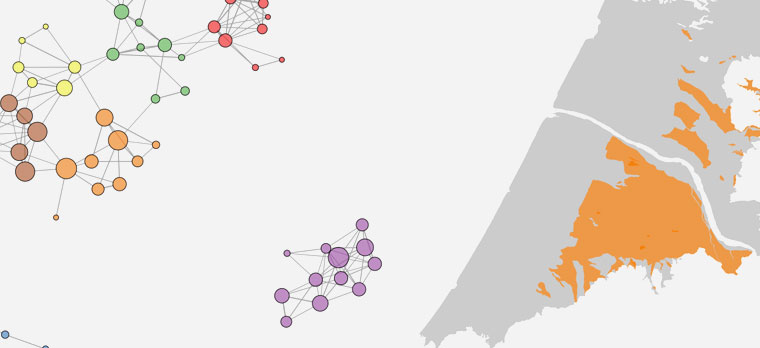Before meeting with Dion O’Neale I would never have thought that a project about soil could be so interesting, however his clear passion for this project would cause even the biggest city slicker to sit up and take notice. Dion is a Research Fellow in the Physics Department at the University of Auckland. He is currently involved in an exciting project with Associate Investigator Pierre Roudier, a scientist in the Soils and Landscapes team at Landcare Research, looking at ways of organising and evaluating data on the distribution of soil types in New Zealand.
Throughout New Zealand soil scientists have categorised the different kinds of soil in certain areas. This information is publicly available which means it is ready and waiting for data-hungry mathematicians like Dion to swoop in and convert it into something useful. The idea behind this particular project is that there are patterns in how soil distributions occur, however we do not have a good way at looking at how these patterns are formed, or what the results are of these relationships. By studying the data, Dion is able to take a closer look at which soil types occur together, how often this happens, and whether certain soil types only occur together in a particular region or are found together across the country.
In certain regions across New Zealand soil scientists have found great complexity in the soil. This complexity can be caused by the geography of the area, for example soils lining a river. In order to evaluate this, Dion has taken the data and used it to produce graphs and diagrams which clearly illustrate the links and relationships between different soil types. Soil scientists can then come in and look at these graphs and see the soil relationships clearly illustrated, opening their eyes to new knowledge and allowing new conclusions to be drawn.
The brilliant thing about this project is that it initiates a data driven approach which can then be met with the expertise of the soil scientists. This collaboration yields greater understanding for both parties and allows the discovery of knowledge that may previously have been hidden. It is a project that, as Dion emphasised, “is not trying to replace any of that expert knowledge, it’s trying to augment it”. This goal in itself is exactly why this project epitomises the work of Te Pūnaha Matatini: it is bringing different disciplines together to share expertise and unearth new knowledge.
The potential impacts of Dion and Pierre’s work are countless. This collaboration allows greater understanding of soils in regions right across New Zealand which, in an economy so heavily dependent on our soil, can be extremely beneficial. This project is also the first step towards an exciting new project which will utilise data from Antarctica in a similar manner, looking at soil samples from the Dry Valleys. Taking data from the dry soils in Antarctica, and combining this with access to data on any human movement in the area, scientists are in a unique position to study a virtually untouched environment.
This project represents the plethora of knowledge that stands to be uncovered when bringing together experts from different fields and encouraging collaboration.

